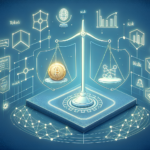Understanding Solana and Avalanche
What is Solana?
Solana is a high-performance blockchain platform designed to support decentralized applications (dApps) and crypto projects. Launched in March 2020, it emphasizes scalability, speed, and low transaction costs to cater to high-demand use cases. One of the defining attributes of Solana is its unique consensus mechanism called Proof of History (PoH), which timestamps transactions to streamline the validation process. This innovation allows Solana to process thousands of transactions per second, making it one of the fastest blockchains available.
What is Avalanche?
Avalanche, on the other hand, is a decentralized platform launched by Ava Labs in September 2020. It is designed to enable the creation of customized blockchain networks and is known for its flexibility and high throughput. Avalanche uses a consensus protocol called Avalanche Consensus, which differentiates it from traditional models like Proof of Work (PoW) or Proof of Stake (PoS). This mechanism facilitates rapid finality for transactions, claiming to achieve thousands of transactions per second while maintaining security and decentralization.
Technical Specifications
Transaction Speed and Throughput
When it comes to transaction speed, both Solana and Avalanche present impressive metrics. Solana boasts a theoretical limit of 65,000 transactions per second (TPS), although real-world performance may vary based on network conditions and adoption. Avalanche, conversely, can achieve around 4,500 TPS under optimal conditions but is designed to allow for scalable solutions that can handle more transactions as more validators join its ecosystem. So, whether scalability is paramount or if you’re operating with fewer transactions in mind, both platforms have strengths to consider.
Consensus Mechanisms
The consensus mechanisms employed by these two blockchains significantly affect their efficiency and scalability. Solana’s Proof of History marks a timestamp on each transaction, allowing for faster confirmation times as transactions can be verified in parallel. This results in substantial performance gains and reduced latency.
Avalanche’s Consensus employs a unique mechanism where nodes participate in a process of repeated sub-sampling to achieve agreement on the state of the blockchain. This allows even nodes with unreliable connections to participate effectively, enhancing decentralization and performance. Both mechanisms have their advantages, but Solana’s is often favored for its speed, while Avalanche focuses on both speed and resilience under varied conditions.
Developer Ecosystem
Programming Languages
Solana primarily supports Rust and C for programming smart contracts, making it appealing for developers familiar with these popular languages. The robust tooling around these languages allows for advanced functionalities while giving developers the flexibility they need to create complex dApps.
Avalanche, meanwhile, supports the Ethereum Virtual Machine (EVM), allowing developers to write smart contracts in Solidity, the same language used for Ethereum projects. This compatibility is advantageous for those migrating projects from Ethereum to Avalanche, fostering a more extensive ecosystem of developers who can quickly adapt to this platform.
Community and Support
A strong developer community is vital for any blockchain platform, and both Solana and Avalanche seek to engage their communities actively. Solana has built a vibrant developer community, encouraged through hackathons, grants, and other initiatives designed to promote innovative projects within its ecosystem. There is an increasing number of projects built on Solana, covering various sectors, from finance to gaming.
Avalanche also has an active community, with a wide array of projects emerging as developers take advantage of its unique features and EVM compatibility. The Ava Labs team actively collaborates with developers to provide tools, resources, and mentorship, maintaining the momentum of growth in its ecosystem.
Transaction Costs
Gas Fees on Solana
One of the significant selling points of Solana is its extremely low transaction fees. Users can expect average fees to hover around $0.00025 per transaction. These low costs contribute to greater accessibility for users, especially in microtransaction scenarios or high-frequency trading situations where cost efficiency is critical.
Gas Fees on Avalanche
Avalanche also aims to keep transaction costs low, although they are generally higher than those on Solana. Users can expect fees ranging around $0.10 to $0.50 per transaction. While still relatively affordable compared to Ethereum, the costs may be a deterrent for users focused on smaller transactions or frequent interactions with the blockchain.
Use Cases and Applications
Solana’s Focus Areas
Solana has carved a niche in sectors that require high throughput, such as finance, gaming, and decentralized finance (DeFi). DApps built on Solana prioritize speed and low costs, making it an ideal choice for projects like Serum (a decentralized exchange) and Radium (an automated market maker). Additionally, the platform has attracted various NFT projects thanks to its ability to handle quick transactions and large volumes efficiently.
Avalanche’s Versatility
Avalanche’s flexibility shines through in its varied use cases. Many projects utilize its customized blockchain capabilities to build specific applications tailored to particular needs. With its EVM compatibility, it’s particularly popular within the DeFi and NFT spaces but extends to other applications like cross-chain communication and enterprise solutions. Well-known projects on Avalanche include Pangolin (a DeFi platform) and Trader Joe (an AMM and liquidity platform).
Security and Decentralization
Security Features of Solana
While Solana offers impressive speed, some critiques have emerged regarding its security and decentralization model. The speed of transactions can lead to complexities surrounding network reliability during congestion or sudden spikes in activity. As a relatively new platform, it has experienced some downtime, which raises concerns about its resilience under attack. However, ongoing developments in protocol improvements seek to address these vulnerabilities.
Security Features of Avalanche
Avalanche has positioned itself with a strong focus on security and decentralization. Its consensus model promotes high security, as it requires the agreement of a significant number of validators to finalize a transaction. In addition, the flexibility of creating custom blockchains allows for varying levels of security tailored to the application’s needs. This feature can be attractive to enterprises looking for specific infrastructure while maintaining security integrity.
In the Investor’s Eye
Market Performance of Solana
Investor interest in Solana has surged due to its rapid growth and strong use cases. The platform has attracted significant capital flowing into its ecosystem, with its native token, SOL, experiencing substantial price increases. Solana’s performance on various exchanges and its active development community have made it a notable player in the crypto space.
Market Performance of Avalanche
Avalanche has also captured the attention of investors, particularly due to its unique proposition of customizable blockchains and EVM compatibility. Its native token, AVAX, has similarly seen price increases, reflecting the strong growth in its user base and project adoption. Investors appreciate its high transaction finality and innovative consensus mechanism, which contribute to the overall confidence in the platform.
Final Thoughts
When weighing Solana and Avalanche, it ultimately comes down to what you need from a blockchain solution. Solana excels in speed and low transaction costs, making it great for high-frequency applications. Avalanche shines through its versatility and robust security features, making it appealing for custom solutions and enterprise applications. Each platform has unique strengths, so understanding their differences helps users make informed decisions based on their project requirements and goals.








